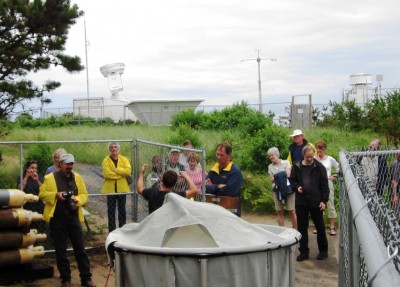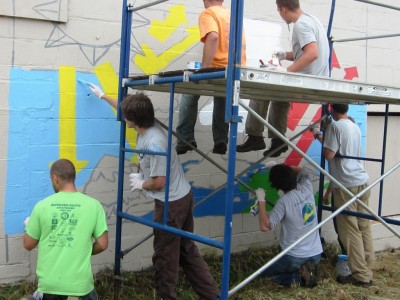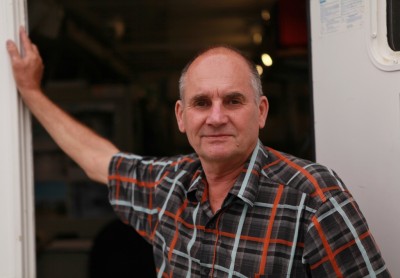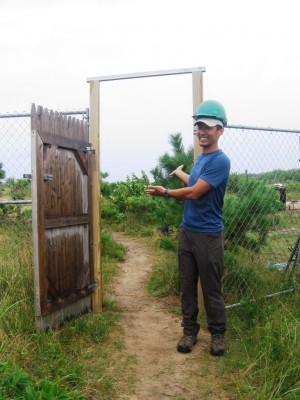From Shining Sea to Tropical Rain Forest
Published: 14 August 2013

On June 30, one of ARM’s three mobile facilities completed a one-year deployment at Cape Cod National Seashore for the Two-Column Aerosol Project, or TCAP. Beginning in July 2012, the first ARM Mobile Facility (AMF1) continuously measured clouds, aerosol, precipitation, energy, and other atmospheric properties from the surface to the troposphere above the site at the seashore’s Highlands Center. Supplemented by in-sky sampling by research aircraft in the summer and winter, these data provide an important seasonal record of air movement between North America and the Atlantic Ocean. Scientists are using these data to study the effect of aerosols on clouds and climate.
Throughout the campaign, ARM worked with an education specialist from the seashore’s Parks as Classroom program to promote public outreach and education about the deployment. Supplementing ranger-led tours of the site, the ARM Education Ranger coordinated site visits for nearly 3,000 students, teachers, and adults to learn about the facility and TCAP science. Almost 100 teachers from throughout New England also attended three workshops to review lesson plans developed around TCAP science topics.

Enthusiastic to the end, seashore colleagues also featured TCAP at their 4-hour Highlands Fest public event on June 28. At the top of each hour, they played a video about TCAP for visitors to learn about the science and goals of the study. After each showing, Lynne Roeder, ARM public information officer from Pacific Northwest National Laboratory, fielded questions about ARM, the mobile facility, and its deployments around the world.
At the end of the day’s events, the group walked to the mobile facility site for an overview tour and to participate in one of the campaign’s last weather balloon launches. Throughout the campaign, staff from the Provincetown Center for Coastal Studies handled the 4-a-day launch schedule and graciously explained the balloon launch process and data collected to numerous visitors. The AMF1 team had nothing but praise for this dedicated group of people:
“They were the most enthusiastic, curious, and hardest working group of balloonists I have worked with,” said Amon Haruta, AMF1 project coordinator from Los Alamos National Laboratory.
Another Goodbye

The end of TCAP also signified the close of another career among the ARM infrastructure family. Vaughan Ivens, transplanted for almost a year from his home in Australia, served as the onsite technician in Cape Cod.
Having never been to the United States before, Vaughan was immediately welcomed with the challenge of site operations during Superstorm Sandy, followed by a series of storms headlined by the Nor’easter Nemo in February 2013. After his stint on the Cape, Vaughan said he and his wife, Judy, planned to do a little sightseeing throughout the East Coast, then stop for an extended visit in England before making their way back to Australia to enjoy retirement.
Bound for Brazil

Scheduled to begin in January 2014, the Green Ocean Amazon, or GOAMAZON field campaign is a collaborative experiment with Brazilian and German scientific organizations. They will obtain two years of data about the tropical atmosphere-cloud-terrestrial climate system, using research aircraft and ground observations from several sites. The AMF1 will be located in Manacapuru, also known as the “T3” site, and site preparations began earlier this year.
The ARM Climate Research Facility is a DOE Office of Science user facility. The ARM Facility is operated by nine DOE national laboratories, including .
Keep up with the Atmospheric Observer
Updates on ARM news, events, and opportunities delivered to your inbox
ARM User Profile
ARM welcomes users from all institutions and nations. A free ARM user account is needed to access ARM data.


















